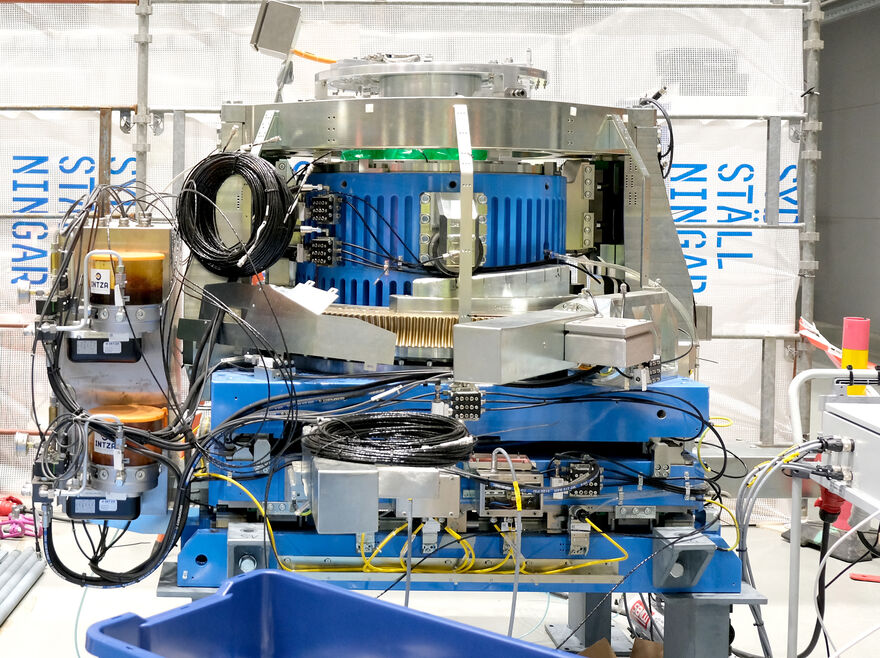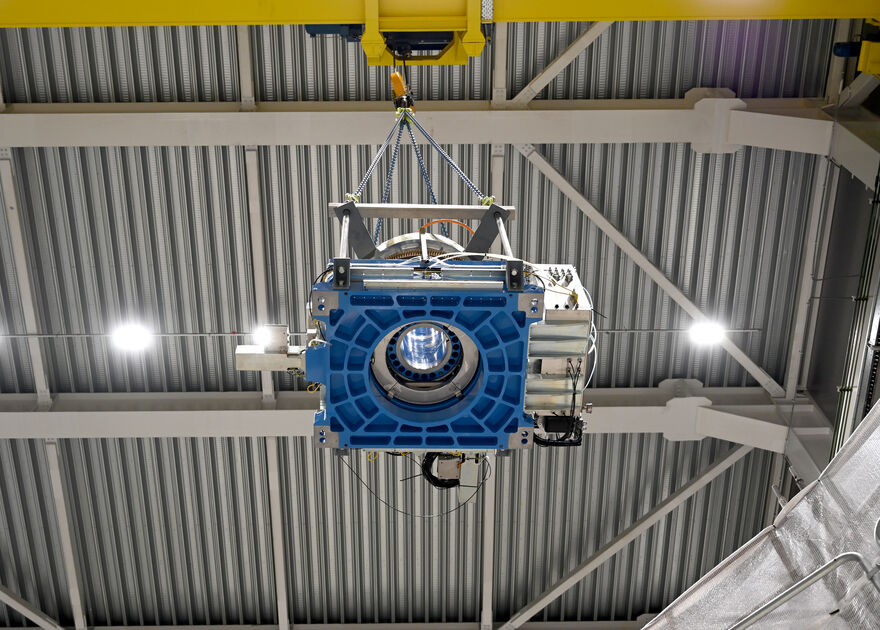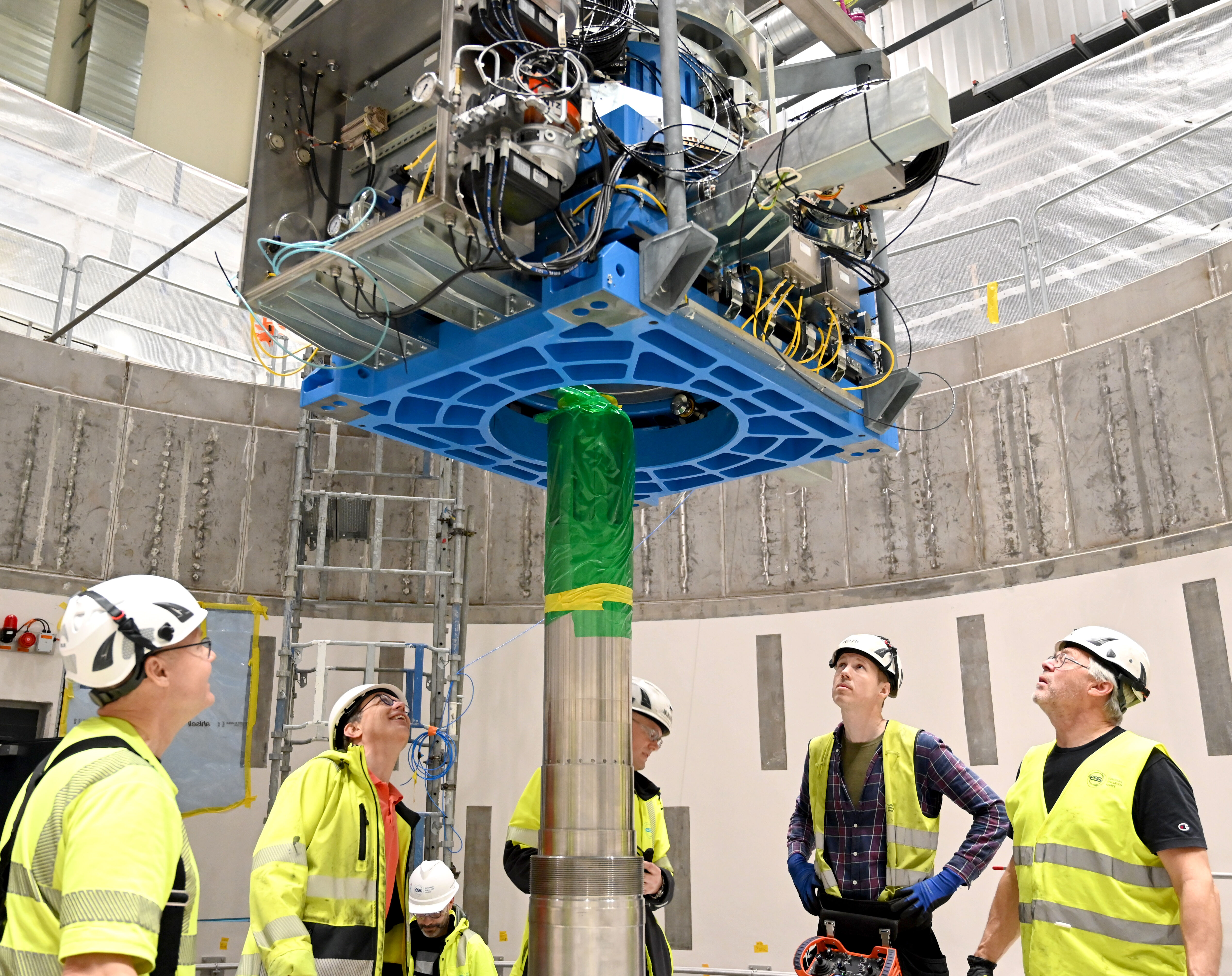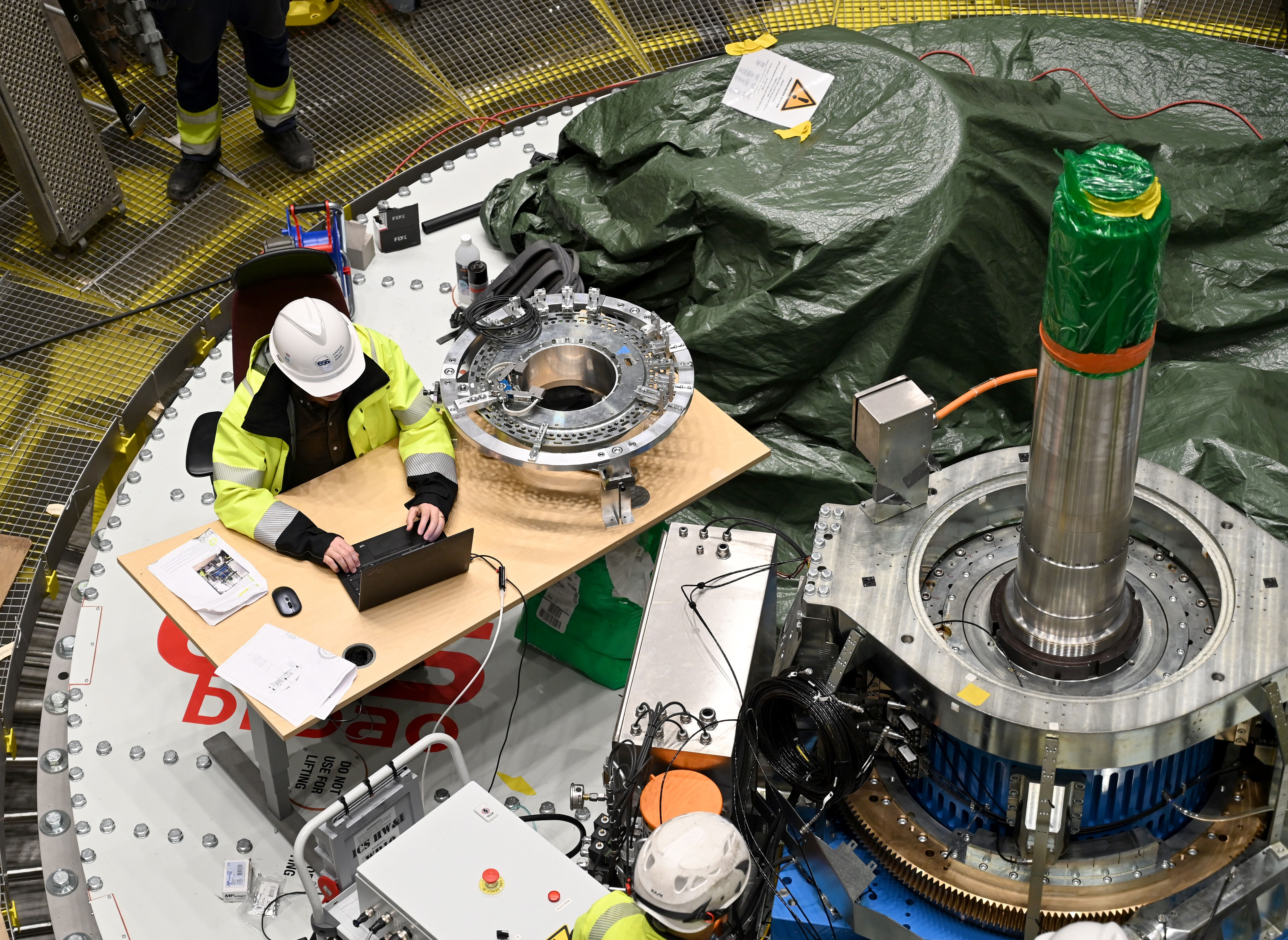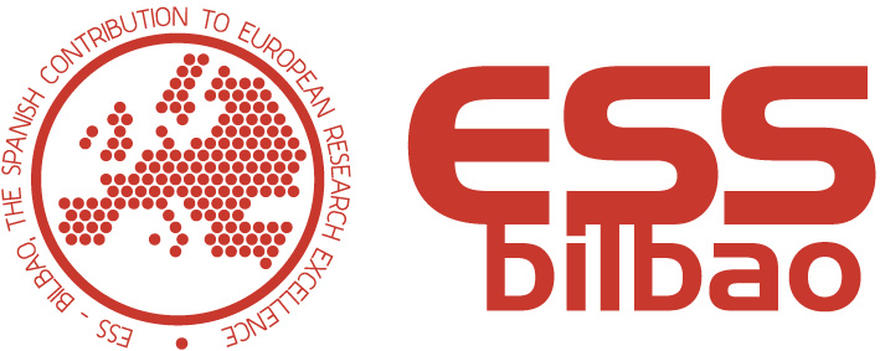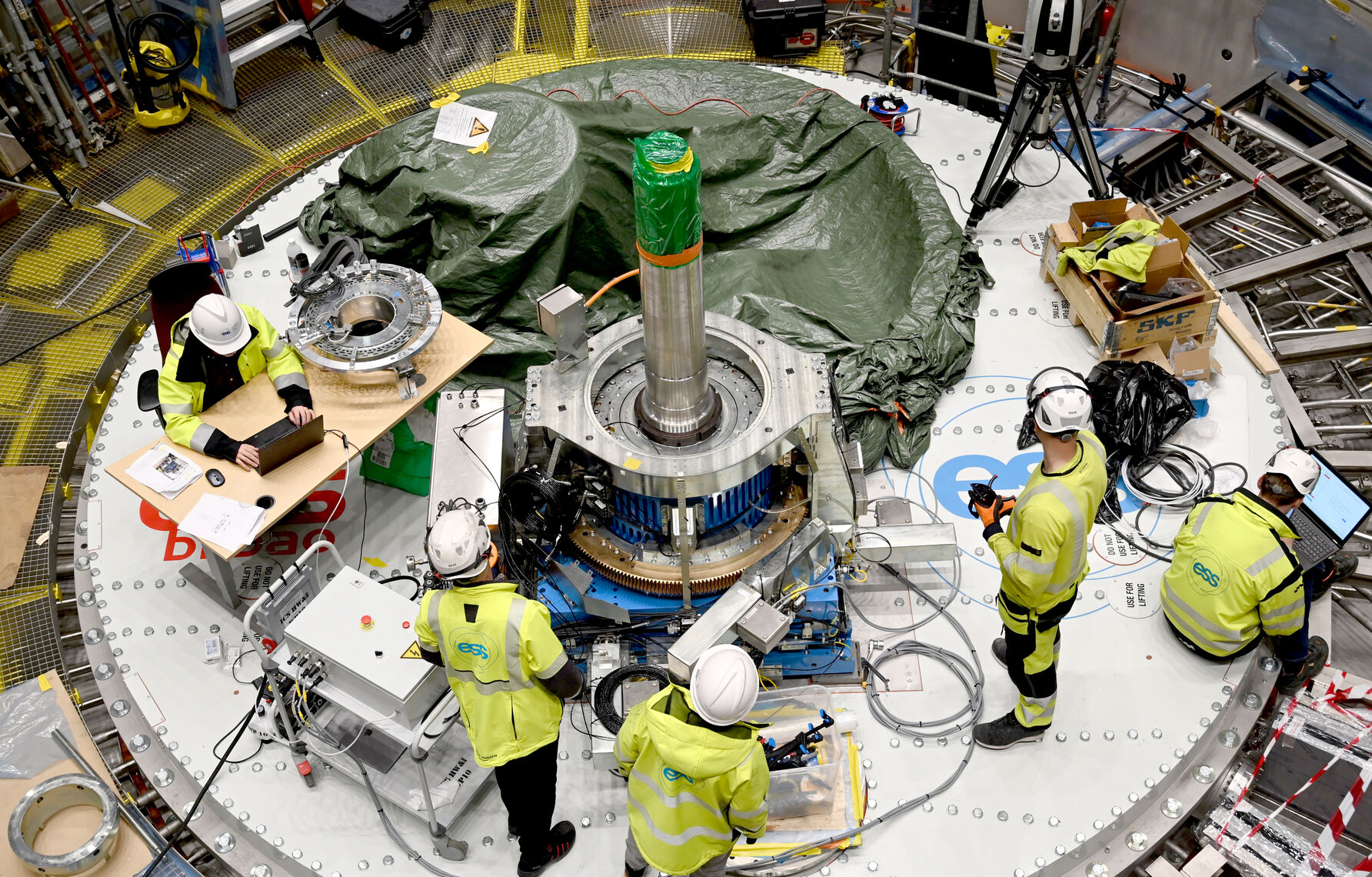
The target wheel drive unit, an In-Kind contribution from Spanish ESS Bilbao, has been successfully installed in the ESS target connection cell. The installation included precise alignment of the wheel which will facilitate in-situ rotation tests, crucial for the operational readiness of the target station in 2025.
The target wheel drive unit, an In-Kind contribution from Spanish ESS Bilbao, is in place in the target monolith, paving the way for upcoming target wheel rotation tests. The drive unit is the motor that will rotate the target wheel at the core of the ESS facility. The 5-tonne, 2.5-metre diameter disc is divided into 36 equal radial segments and holds around 7,000 tungsten blocks. Neutrons are generated when the tungsten inside the wheel is struck by high-energy proton pulses from the accelerator. The precision in the wheel's rotation speed, set at 23 1/3 rotations per minute, is maintained by the newly installed drive unit.
Mounted onto the upper shaft and vessel head, the drive unit is now fully integrated with the wheel.
The alignment of the target wheel assembly was executed by the ESS Survey, Alignment and Metrology (SAM) team, in close collaboration with ICS. Coming steps involve rigorous testing of both rotation and balance through the ESS Integrated Control System, utilising bespoke software designed to monitor and control the operation.
A control system is in place to ensure the speed of rotation is in exact synchronisation with the timing distribution of every proton pulse. This system not only regulates the wheel's speed but also monitors its operational status, including rotation, axis positions, lubrication, temperature, and vibration. A TwinCAT software application, developed with support from the Motion Control group, encapsulates all these variables, facilitating effective monitoring.
Eventually, the target wheel control system will integrate into the EPICS system for centralised monitoring of all processes from the ESS main control room.
Additionally, a dedicated sensor system has been developed as part of the Machine Protection System (MPS). This system will be positioned on top of the drive unit.
Next, the helium rotary union and associated piping to the helium circulators in the utility building will be put in place on top of the drive unit. This system will allow for continuous helium flow through the shaft to cool the tungsten bricks (spallation material) inside the target wheel.
Having previously tested the target wheel, shaft and drive unit in the Mock-Up and Test Stand, culminating in a 1,000 hour long uninterrupted spin cycle, the next round of tests is set to take place inside the connection cell.
In collaboration with:

























